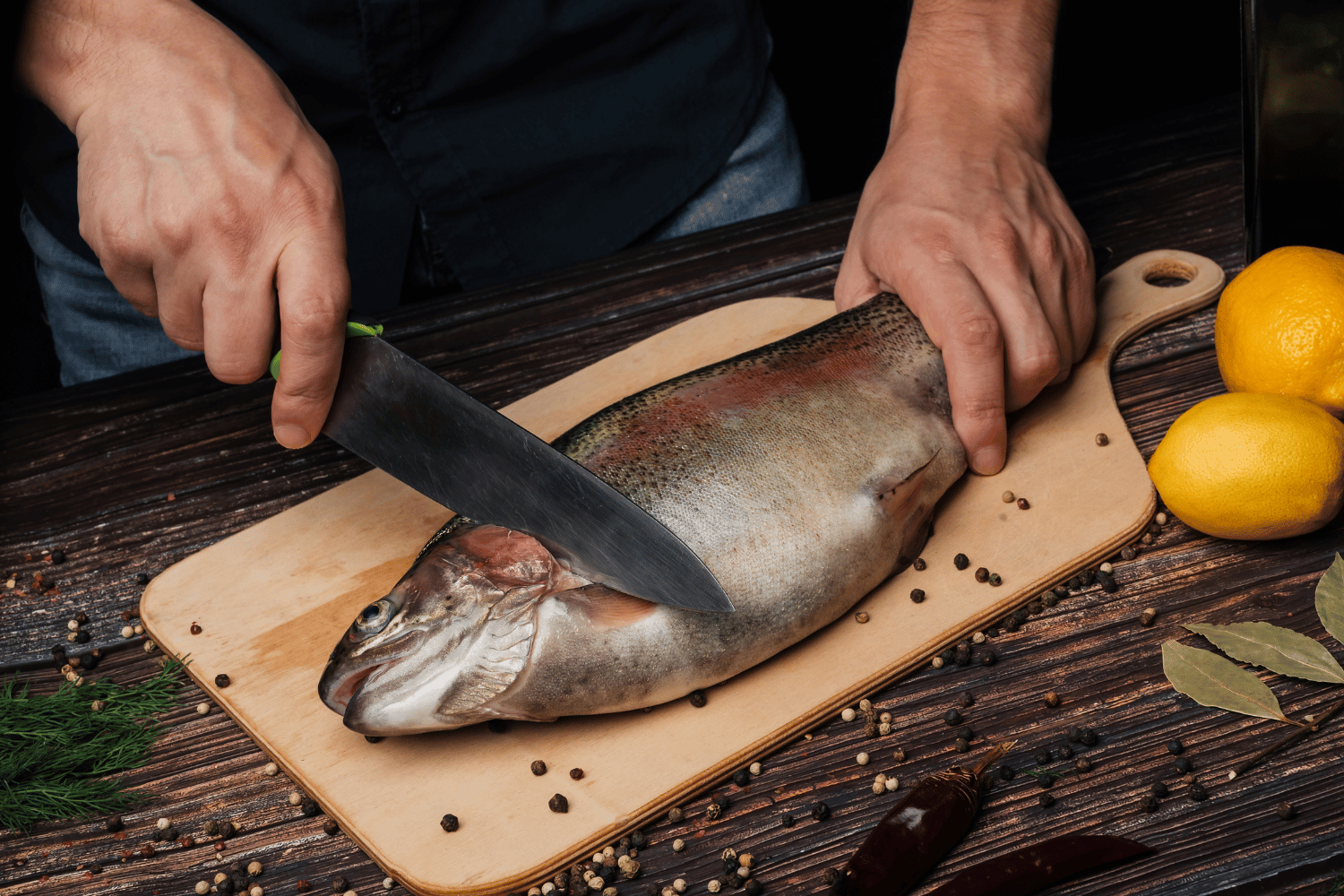

EASTER ORDERS ARE CLOSED!
Wishing everyone a Happy Easter



Knowing how to gut and scale a fish is an essential skill, especially for seafood lovers. It transforms whole fish into delicious fillets ready for your favourite cooking methods. At Manettas Seafood Market, we’re here to guide you through preparing fish with our easy-to-follow steps and tips. Learn how to scale and gut a fish like a professional with our quick and easy instructions.

Before we begin, gather your tools and materials. Here’s what you’ll need:
1. A Whole Fish:
Use: The whole fish is the main ingredient for your seafood dish. It provides you with the fresh, unprocessed source of seafood that you’ll be preparing. When selecting a whole fish, make sure it’s fresh and matches your recipe’s requirements in terms of species and size.
2. A Fish Scaler or a Butter Knife:
Use: A fish scaler or a butter knife is essential for removing the scales from the fish’s skin. The scaler is designed specifically for this purpose and makes the job easier. However, a butter knife with a blunt edge can serve as an alternative tool for scaling if you don’t have a fish scaler.
3. A Sharp Knife:
Use: A sharp knife is used for gutting the fish. It helps you make precise cuts to access the internal cavity and remove the organs, gills, and other unwanted parts. Make sure your knife has a sharp edge to ensure a clean and efficient gutting process.
4. Cold Running Water:
Use: Cold running water is essential for rinsing the fish and washing away loose scales, blood, and debris that may remain after scaling and gutting. It helps maintain the cleanliness and freshness of the fish during the preparation process.
5. A Cutting Board:
Use: The cutting board provides a stable and hygienic surface for working with the fish. It protects your kitchen counter and makes it easier to handle the fish.
6. Baking Paper:
Use: Baking paper is placed on the cutting board to create a clean and disposable surface for working with the fish. It prevents the fish’s scales, juices, or other remnants from coming into direct contact with the cutting board. This is not a necessary addition to your list of tools and materials, but it will make cleanup easier later on.

Scaling a fish is the process of removing its scales. Fish scales are a protective layer on the skin, and it’s essential to remove them before cooking. Here’s how to do it:
Scaling can be messy, so be prepared for a few loose scales to fly around. Keep a gentle but firm hand on your fish to avoid damaging the fish’s flesh.

Gutting a fish involves removing the internal organs, including the digestive tract, gills, and other unwanted bits. Here’s how to do it:

Once you’ve successfully scaled and gutted the fish, it’s time to make some final preparations:
After your first few attempts at scaling and gutting a fresh catch, you’ll notice that your skills will gradually improve. You’ll become faster and more efficient, meaning you’ll be able to enjoy fresh seafood and a home-cooked meal more often.
Before you move up to the ‘adept’ level, though, here are a few helpful tips for beginners when scaling a fish.
Removing the scales and internal organs helps to prevent the fish from spoiling quickly. This is especially important if you are not cooking the fish right away. Fish scales can trap bacteria, which can cause the fish to spoil faster. Removing the internal organs also helps to prevent the fish from developing a strong fishy smell. By gutting and scaling the fish yourself, you’re ensuring that your future meal is fresh and free from bacteria.
Once the fish has been scaled and gutted, you can use the trimmings to make fish stock or broth. This is a great way to reduce food waste and get the extra flavour out of your fish. Fish trimmings can also make other dishes, such as fish cakes or fish balls.
When you scale and gut the fish, you have more control over the cooking process. You can choose to leave the skin on or off, and you can also remove any bones before cooking. This gives you more flexibility and allows you to cook the fish to your liking. For example, if you are grilling the fish, you may want to leave the skin on to protect the flesh from the heat.
Not everyone can gut and scale a whole, fresh fish. It takes effort, time and patience to do it properly. But once you’ve mastered this skill, you can give yourself a big pat on the back for mastering a home cooking technique that will continue to serve you well for the rest of your life.

Now that you know how to gut and scale fish properly, you’re ready to cook up some delicious seafood dishes. Remember that practice makes perfect, so don’t be discouraged if your first attempts aren’t flawless. Over time, you’ll develop the technique and confidence to handle different fish species with ease.
At Manettas Seafood Market, we’re proud to provide fresh, high-quality seafood to our customers, whether you’re a seasoned chef or a home cook looking to enjoy a tasty meal. Scaling and gutting a fish is just the first step in creating delicious seafood dishes, so keep exploring new cooking methods and recipes to appreciate the incredible flavours of the ocean fully.
For more seafood tips, cooking inspiration, and to discover our range of fresh seafood, explore our website and enjoy the incredible world of seafood at your fingertips.